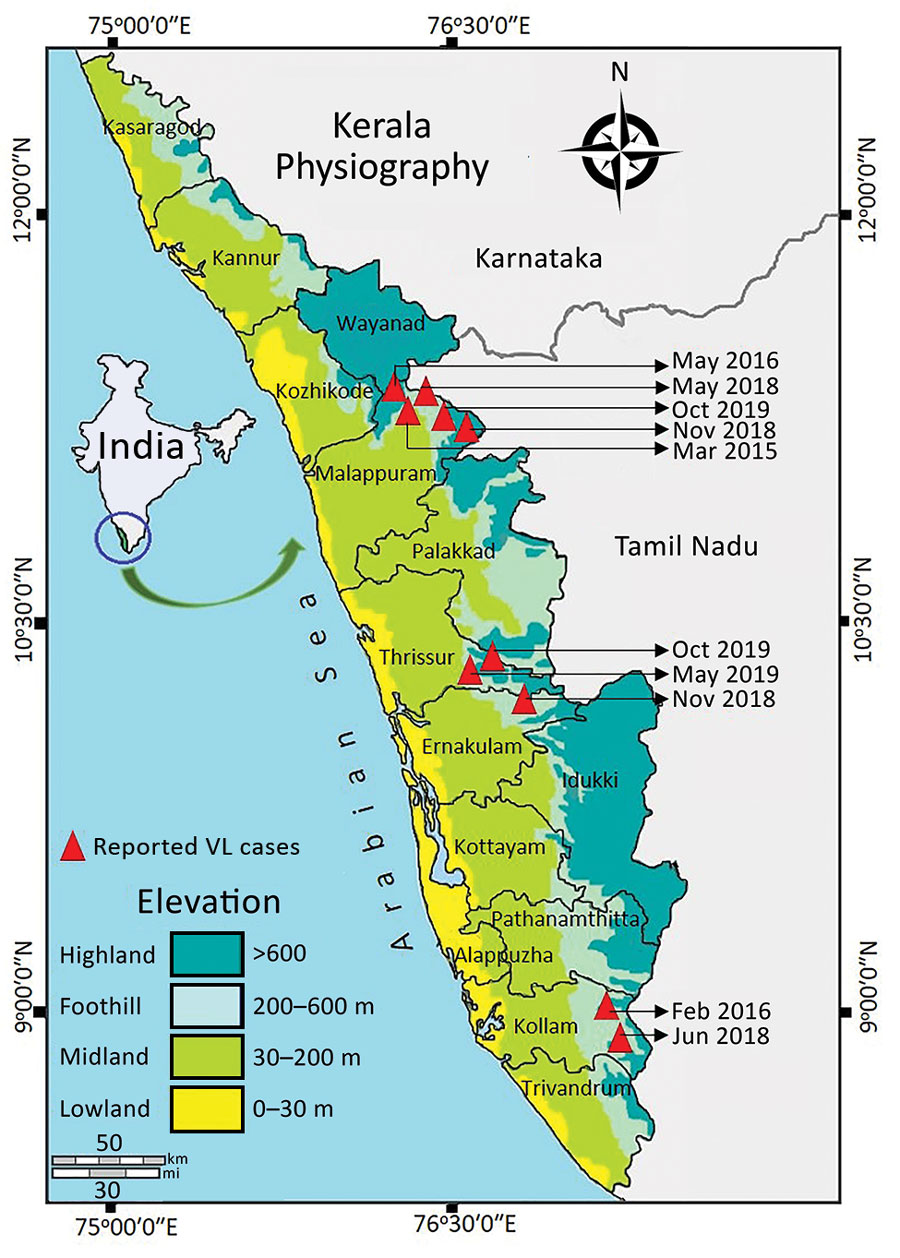Volume 26, Number 8—August 2020
Research Letter
Visceral Leishmaniasis Caused by Leishmania donovani Zymodeme MON-37, Western Ghats, India
Figure

Figure. Spatial distribution and detailed timeline of VL cases in the foothills of Western Ghats, Kerala, India. VL, visceral leishmaniasis.
Page created: June 02, 2020
Page updated: July 19, 2020
Page reviewed: July 19, 2020
The conclusions, findings, and opinions expressed by authors contributing to this journal do not necessarily reflect the official position of the U.S. Department of Health and Human Services, the Public Health Service, the Centers for Disease Control and Prevention, or the authors' affiliated institutions. Use of trade names is for identification only and does not imply endorsement by any of the groups named above.